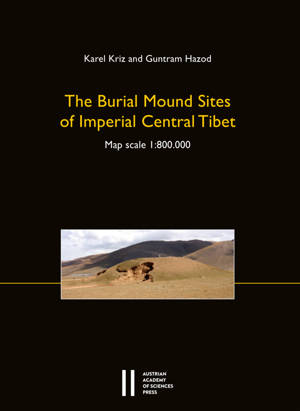
- Afhalen na 1 uur in een winkel met voorraad
- Gratis thuislevering in België vanaf € 30
- Ruim aanbod met 7 miljoen producten
- Afhalen na 1 uur in een winkel met voorraad
- Gratis thuislevering in België vanaf € 30
- Ruim aanbod met 7 miljoen producten
Zoeken
The Burial Mound Sites of Imperial Central Tibet
Map Scale I: 800.000
Karel Kriz, Guntram Hazod
Paperback | Engels | Veröffentlichungen zur Sozialanthropologie | Denkschriften der Philosophisch-Historischen Klasse | nr. 25
€ 111,95
+ 223 punten
Omschrijving
This map created by Karel Kriz and Guntram Hazod is the result of a cooperation between the Institute for Social Anthropology (ISA) of the Austrian Academy of Sciences and the Department of Geography and Regional Research of the University of Vienna. It illustrates the position of the more than 600 burial mound fields of the Central Tibetan region that have been registered so far by the project "The Burial Mounds of Central Tibet" at ISA. The entries, historically related to the time of the Tibetan Empire (7th-9th century CE), reveal a tumulus landscape of enormous concentration in the relatively small geographic area of Central Tibet - the heartland of the Tibetan Empire. The supplement gives insight in the general topic of the burial mound history and includes a listing of the sites and their principal classifications.
Specificaties
Betrokkenen
- Auteur(s):
- Uitgeverij:
Inhoud
- Aantal bladzijden:
- 44
- Taal:
- Engels
- Reeks:
- Reeksnummer:
- nr. 25
Eigenschappen
- Productcode (EAN):
- 9783700185611
- Verschijningsdatum:
- 11/11/2020
- Uitvoering:
- Paperback
- Formaat:
- Trade paperback (VS)
- Afmetingen:
- 222 mm x 7 mm
- Gewicht:
- 299 g

Alleen bij Standaard Boekhandel
+ 223 punten op je klantenkaart van Standaard Boekhandel
Beoordelingen
We publiceren alleen reviews die voldoen aan de voorwaarden voor reviews. Bekijk onze voorwaarden voor reviews.








